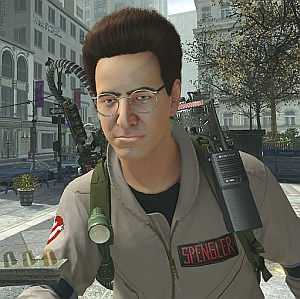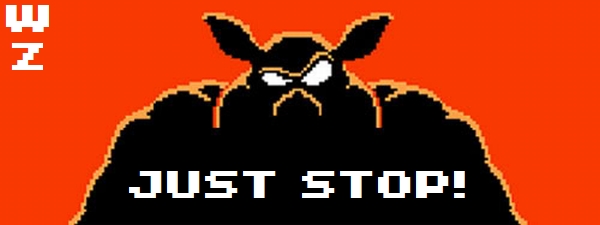Most Recent: PS2
PlayStation Now open beta is available… Now
Sony has officially launched the PlayStation Now open beta, so if you’re interested in streaming PS3 games to your PS4 via a very expensive rental system, now is the time.
PlayStation Now currently offers over 100 PS3 games to rent through the PS4 interface. In the weeks ahead, the app’s availability will expand to include the PS3, Vita, PlayStation TV, and select Sony Bravia televisions released this year. According to the PlayStation Blog, the consolemaker eventually plans to offer PS1, PS2, and PS4 games through the streaming rental service as well.
But how does it all work? Sony has said that games will be available for rental periods of four hours, seven days, 30 days, and 90 days. As you can see in the video above, most 4-hour rentals are priced at $3-$5. Longer rentals will cost more money and Darksiders is shown as $15 for 90 days (which is actually a terrible deal considering you can buy it from Amazon for under $14). As a way to provide value, most rentals include any add-on content that was released post-launch. Trophy support and online play (even against players who own the real game) is also included with each rental.
As this is an open beta, Sony plans to listen to fan feedback and make changes in response to that feedback. First on the list is some kind of subscription plan, though details about what it will include and how much it will cost will be revealed “soon,”
Harold Ramis, the man who gave the world Ghostbusters, has died
 This is only tangentially related to video games, but it would be a huge disservice for Warp Zoned to ignore today’s passing of one of the greatest comedic minds of the 1980s and 1990s: Harold Ramis. Ramis died this morning due to complications from autoimmune inflammatory vasculitis, a rare disease that affects the blood vessels. He was 69.
This is only tangentially related to video games, but it would be a huge disservice for Warp Zoned to ignore today’s passing of one of the greatest comedic minds of the 1980s and 1990s: Harold Ramis. Ramis died this morning due to complications from autoimmune inflammatory vasculitis, a rare disease that affects the blood vessels. He was 69.
Ramis is best known to film fans for his appearance in 1984’s Ghostbusters as Dr. Egon Spengler. He also co-wrote the film and reprised the role in 1989’s Ghostbusters II. In 2009, he and writing partner Dan Aykroyd would team up again to resurrect the paranormal scientists in Atari’s Ghostbusters: The Video Game. Once again slipping into the character’s signature deadpan delivery, Ramis provided vocals for Egon in the game.
In addition to the Ghostbusters franchise, Ramis was responsible for more than a few movies you may have heard of. He wrote and starred in Stripes, wrote National Lampoon’s Animal House, directed National Lampoon’s Vacation, and wrote and directed Caddyshack and Groundhog Day. If you took a regular Twinkie and said that it represented the career of your average writer/director/actor, Harold Ramis’ Twinkie would be 35 feet long and weigh approximately 600 pounds. In other words, that’s a big Twinkie.
Our thoughts go out to the Ramis family.
Nordic Games wins big at THQ auction: Darksiders, Red Faction, MX vs ATV, more

An unlikely winner has emerged in the second round of the THQ sweepstakes: Nordic Games. The small publisher, located in Austria, bid $4.9 million to obtain the majority of THQ’s remaining properties including Darksiders, Red Faction, MX vs ATV, Destroy all Humans!, Summoner, Titan Quest, Frontlines, Juiced, Full Spectrum Warrior, and over 150 other titles. A full list of Nordic’s acquisitions will be unveiled soon, probably sometime after the purchase hearing current set for May 13.
But now the question becomes, what happens next? What does Nordic Games, best known for publishing the Painkiller series, plan to do with all of these properties? According to Lars Wingefors, Nordic’s CEO, the company plans to embark on an in-depth analysis of each property and will eventually move forward with sequels to many of them.
“First and foremost we are very happy about this deal which also turns over a new leaf for the entire Nordic Games Group. In the long term, we either want to cooperate with the original creators or best possible developers in order to work on sequels or additional content for these titles,” Wingefors said.
To that end, Nordic Games has set up a special section in their official forums to solicit fan feedback on how to proceed with their new toys.
The first half of the THQ auction was held in January, with Deep Silver, Ubisoft, Crytek, Take-Two Interactive, and Sega participating.
THQ plans to sell off Darksiders, Red Faction, Homeworld, more in May

The THQ sell-off will continue this Spring as the publisher has announced that four major franchises will go up for auction as well as two compilations of lesser franchises.
Darksiders (which went unsold at the initial THQ auction), Red Faction, Homeworld, and the MX racing franchise have all been put on the block by THQ. The company will also sell the rights to a package of original properties (including Big Beach Sports, Destroy All Humans!, Summomner, and others) and a package of licensed games (Marvel Super Hero, Supreme Commander, Worms, and others). A new owner for each franchise will be chosen sometime in May.
If you’ve ever wanted to own a formerly top-selling video game franchise, you should get in touch with THQ by emailing them at auction@thq.com by April 1. But be aware, you’ll be expected to show proof of funds in case your bid is selected by the creditors committee.
Of course, how much could something like Destroy All Humans! (which, admittedly, I love) actually go for?
Jamie Fristrom’s Swingin’ Career, From Spider-Man to Energy Hook: An Interview

Jamie Fristrom is a name that you might not be familiar with, but you’ve certainly experienced his work. In 1996, Fristrom became part of the original team at Treyarch and had a hand in many of their earliest hits. But his biggest claim to fame is the creation of the webslinging engine found in Spider-Man 2 (and used in nearly every Spider-Man game since). In that dark period between GoldenEye 007 and Batman: Arkham Asylum, Fristrom’s work on Spider-Man 2 proved that licensed games could still be fun.
After his days at Treyarch ended, he went the indie route and created the acclaimed XBLA game Schizoid and founded his own one-man-studio, Happion Labs. His first game under the Happion Labs banner will be Energy Hook, a game that attempts to recapture the fun we all found in aimlessly webslinging around Manhattan.
Fristrom is readying a Kickstarter campaign to help fund the game, which will likely launch in a few weeks. In the meantime, I had a chance to talk to him about his career so far and where he plans to take it with Energy Hook. (more…)
Just Stop! Consoles Are NOT Headed For a Crash

When the Internet decides to collectively believe something that’s just not true, we have to cry out… Just Stop! This is what’s making a Warp Zoned editor rip his computer from the wall in frustration today…
Over the last few weeks, you’ve probably seen more than a few articles bemoaning the financial health of the retail games sector. Analysts and journalists have been carrying on about how this is the end of the line. That even with a generational jump looming, the gaming community has abandoned disc-based games for their iGadgets and their free-to-play Facebook counterparts.
No! Just Stop! YOU. ARE. WRONG. (more…)
New Releases: Halo 4, LittleBigPlanet Karting, NASCAR Inside Line, More

You finished the fight, but now he’s back! The Master Chief returns to the Xbox 360 this week in Halo 4, the first game in the series not developed by Bungie (it was actually created at Microsoft’s 343 Industries).
So who will stand against the mighty Master Chief? Believe it or not, a pair of racing games. Sony is bringing LittleBigPlanet Karting to the PS3 this week and Activision will release the multiplatform NASCAR: Inside Line (PS3, Wii, Xbox 360).
Also available this week is a quartet of compilations: Namco Bandai’s Dragon Ball Z Budokai HD Collection (PS3, Xbox 360), the Rockstar Games Collection: Edition 1 (PS3, Xbox 360), BioWare’s Mass Effect Trilogy (PC, Xbox 360), and THQ’s Saints Row: The Third – The Full Package (PS3, Xbox 360).
Hit the jump for even more new releases. (more…)
The Scientifically Proven Top 100 Video Games of All Time

We greatly expanded and updated The Scientifically Proven Best Video Games of All Time as The Video Game Canon in 2017. You should check it out!
When it comes to deciding which video games qualify as the best of all time, everyone has an opinion. And sometimes those opinions result in a violent argument over the mental faculties (or lack thereof) of the listmaker. So we thought we’d add a little science to the equation to find out exactly which games can be considered the “100 Best Video Games of All Time” and which ones have been fighting above their weight class all these years. (more…)







